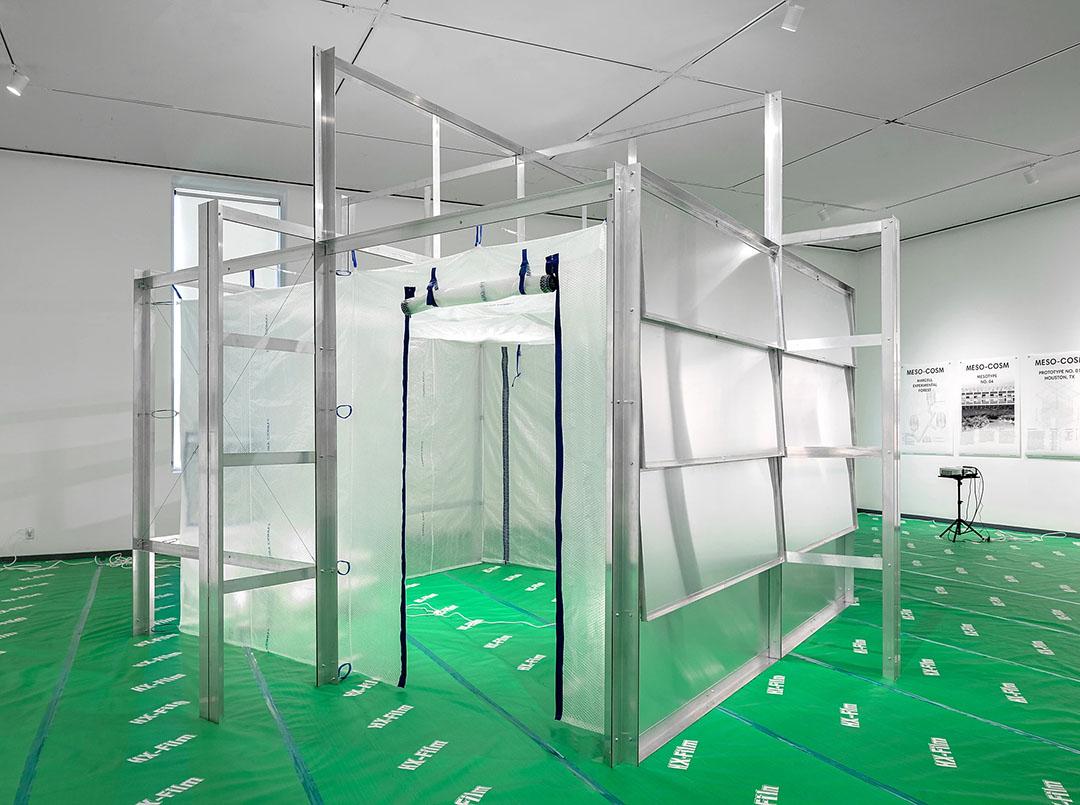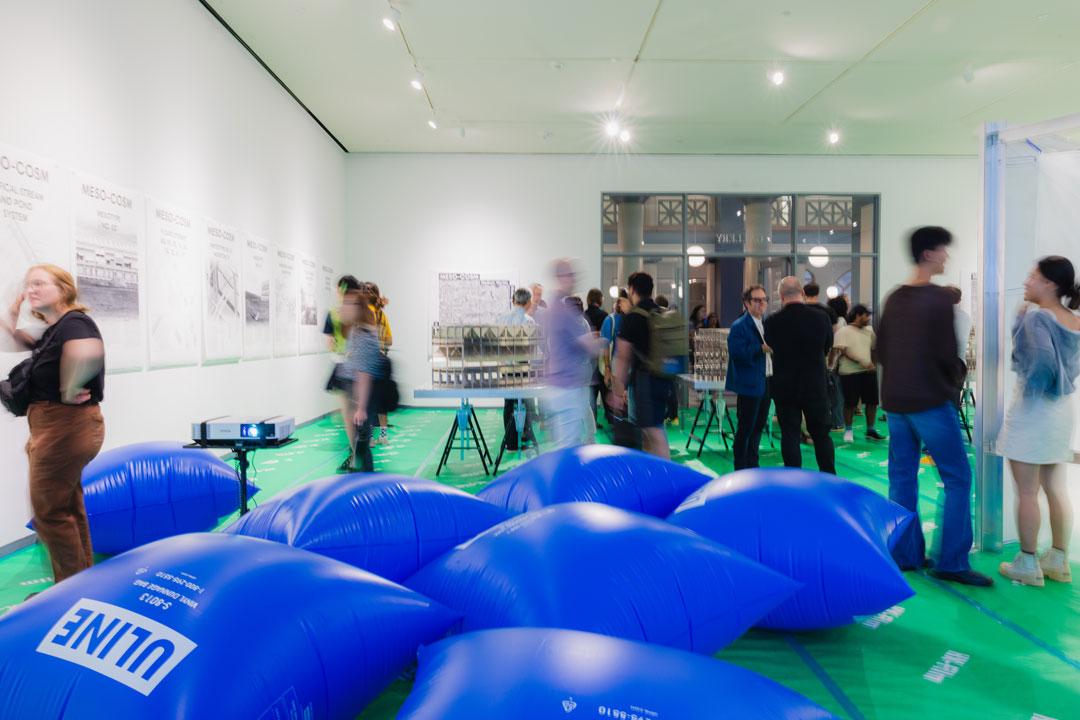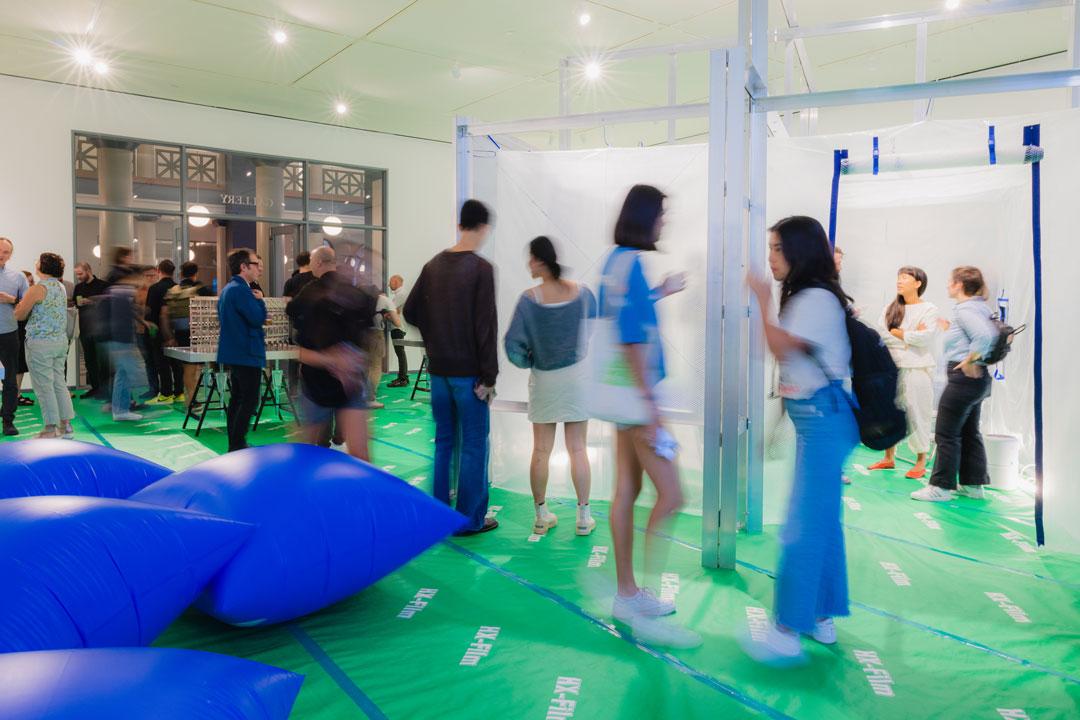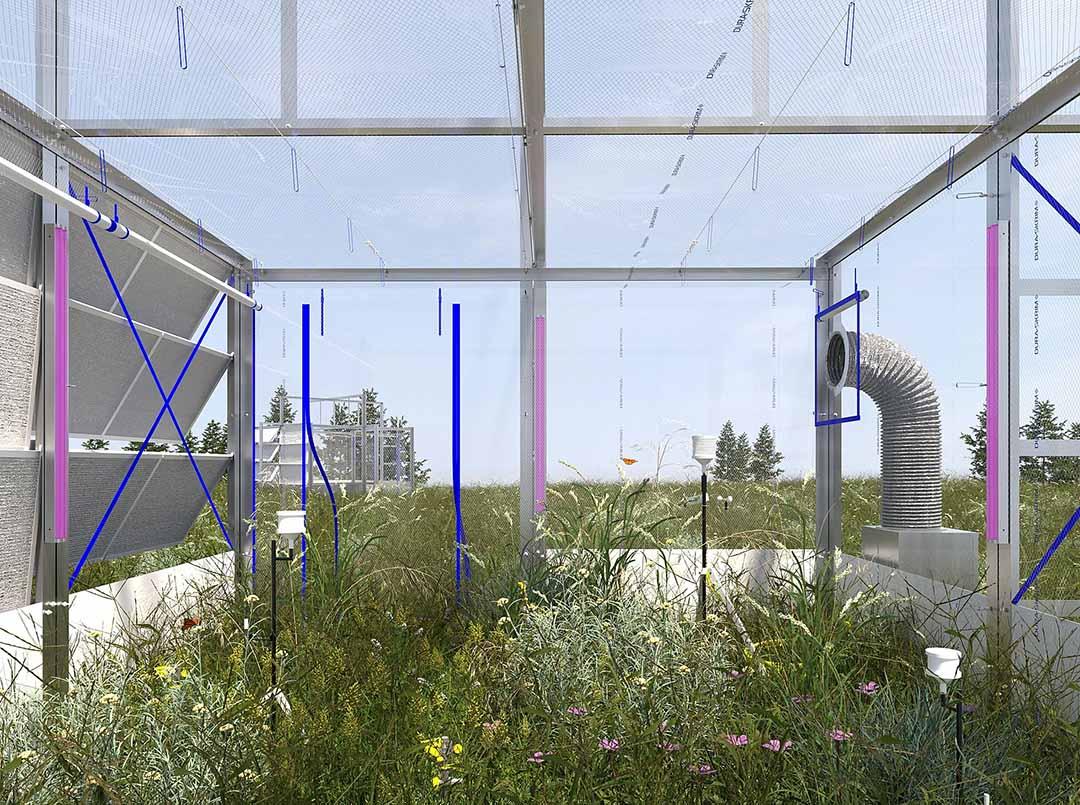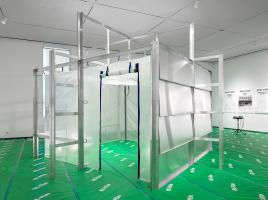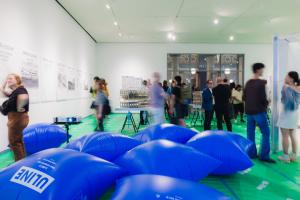Brittany Utting
A mesocosm, or “medium world,” is an infrastructure for long-term outdoor ecological experimentation. According to the systems ecologist Eugene P. Odum, mesocosms are situated between the microcosm of the laboratory and the macrocosm of the planet, enabling observations of real-world conditions. Filling the gap between these scalar extremes, mesocosms are critical research infrastructures for studying the effects of anthropogenic climate change. They are typically organized into arrays of self-similar environmental “patches” in which variables such as temperature or atmospheric composition are adjusted to simulate changes in an ecosystem. Alongside the technical labor of scientific research, they accommodate the intimate labor of tending and nurturing their interior worlds. This tending extends to the architecture itself as their envelopes are breathable, operable, and adjustable, suggesting new ways to reimagine architecture’s relationship to the land and its cycles. The open-endedness of the mesocosm offers a way to reorient environmental thinking toward a less controlled and increasingly entangled spatial practice.
MESO-COSM proposes four architectural prototypes that test this open-ended tectonic through calibrated enclosures and environmental systems. Typical architectural assemblies reject the exterior, hermetically enclosing the interior to remove any possibility of climatic mixing. Instead, is there an alternative way to design the envelope, to reclaim architecture as a planetary assemblage? Like mesocosms, we imagine that these prototypes are both lively machines and living experiments: full of inclement weathers, pollinated winds, and creaturely communities. Multi-layered roof filters, facade shading enclosures, as well as water and energy capture infrastructures encourage environmental adjustments at the scale of the building. These systems create thermal gradients and ventilation currents, enabling a more sensuous open-air interior. Situated in the uneasy space between technical mediation and environmental encounter, these “meso-types” suggest architectures that participate in the frictions and mediums of our changing climates.
MESO-COSM was exhibited at the Mashburn Gallery, University of Houston, TX, September–October 2023.
Project Leads: Daniel Jacobs, Brittany Utting
Design & Research Team: Anna Brancaccio, Nino Chen, Maximilien Chong Lee Shin, Harish Krishnamoorthy, Jane Van Velden


